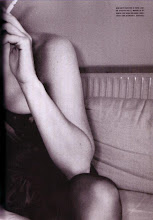 ....The name Dite LaViolette was not, contrary to popular belief, coined while eating vanilla cupcakes or while running through a flower field (although we strongly encourage such behavior). The name actually comes from a small province in France: Poitiers. Our eldest traceable ancestor, Jacques Brouillet dit LaViolette, was born in Goeux, in the Province of Poitiers in France in the 17th Century. His son, Michel Brouillet dit LaViolette, came to New France in 1678 as part of the Régiment Carignan to defend New France in the Iroquois wars.
....The name Dite LaViolette was not, contrary to popular belief, coined while eating vanilla cupcakes or while running through a flower field (although we strongly encourage such behavior). The name actually comes from a small province in France: Poitiers. Our eldest traceable ancestor, Jacques Brouillet dit LaViolette, was born in Goeux, in the Province of Poitiers in France in the 17th Century. His son, Michel Brouillet dit LaViolette, came to New France in 1678 as part of the Régiment Carignan to defend New France in the Iroquois wars.

As an aside: the men who were sent over to defend New France were also expected to populate the area afterwards. The monarchy of France thus decided to send over women expressly for the purpose of marrying these men. They were known as Les filles du Roi. Between 1663 & 1673, about 768 filles du roi were sent over. In addition to having the costs of her passage paid by the state, each girl received an assortment of practical items in a case: a coiffe, bonnet, taffeta handkerchief, pair of stockings, pair of gloves, ribbon, four shoelaces, white thread, 100 needles, 1,000 pins, a comb, pair of scissors, two knives and two livres in cash. Upon arrival, the Filles received suitable clothing and some provisions. Allegedly, the men preferred peasant girls as wives because they were considered much more industrious. Every Fille du Roi had the right to refuse any marriage offer that was presented her. In order to make an informed decision to accept a would-be husband, the girls asked questions about the suitor's home, finances, land and profession. Arriving in 1670 was Marie Dubois, who was to become Michel Brouillet dit LaViolette’s wife.


Their first son is recorded as being named “Pierre Brouillet Dit LaViolette,” yet his son is recorded simply as “Pierre Brouillet.” Thus the “LaViolette” became obsolete in the 1700’s. It is said that most French-Canadian families had composite names, but, for census purposes, they were later forced to pick one of their two last names. Others included “dit Champagne” “dit Châteauneuf” “dit Bellehumeur”—aren’t they great?
But what does it mean? Literally translated, it is: “said: the violet”, but could be more appropriately rendered “of the violet.” We use the feminized form here, “dite” because, well, we’re girls.
And its significance to this blog? Because we lament the loss of the beautiful second half of our last name—Sara signs her school papers “Dite LaViolette”—and wanted to grace our blog with its loveliness as a tribute to our French-Canadian heritage.

P.S. Our last name is not exactly “Brouillet,” either, as the name has morphed further over time.

P.S. Our last name is not exactly “Brouillet,” either, as the name has morphed further over time.
Our last name? Smith.
Just kidding.
Picture Credits: First photo, Postcard from family collection. 2nd, Iroquois wars: http://www.uppercanadahistory.ca/finna/que2p34a.jpg
3rd-5th, Les Filles du Roi, http://www.tlfq.ulaval.ca/axl/francophonie/images/filleduroy.jpg
http://www.travelworldonline.de/filles.jpg
http://www.uppercanadahistory.ca/finna/que3p7a.jpg.
http://www.travelworldonline.de/filles.jpg
http://www.uppercanadahistory.ca/finna/que3p7a.jpg.
Last Photo, my great great great great (you get the picture) grandfather.

No comments:
Post a Comment